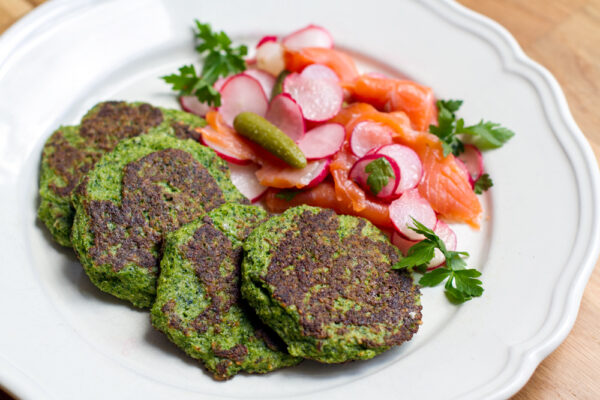When it comes to food, there are five recognised tastes. While you’ll be familiar with salty, sweet, bitter and sour, you might not be aware of the fifth one: umami. In this post, I will explain what this flavour is and list out high umami foods you can use in cooking to enhance your dishes.

Umami refers to a specific savoury flavour, or what I like to call a characteristic of a flavour, that is now recognised as the ‘fifth taste’ after salty, sweet, sour and bitter. To me, umami = savoury deliciousness!
This moreish flavour is responsible for our love for things like truffles and mushrooms, Parmesan cheese, gravy, meat sauces, caramelised vegetables, Vegemite and miso soup.
What Is Umami Flavour?
Our mouths contain taste receptors, which are located on different parts of our tongue. While the sweet flavour is registered on the tip of your tongue and the bitter taste is sent to the back, the umami receptors are kind of all over the place.

The name umami was coined by a Japanese chemist, Kikunae Ikeda, who noticed a particular taste in asparagus, cheese, meat and especially in dashi – a Japanese stock made from kombu (kelp). After further investigations into kombu, he eventually identified glutamate – an amino acid – as the source of that savoury flavour.
Glutamates, the salts of glutamic acids, are present in most foods (fish, plants, meat) and when the organic matter of those foods breaks down (cooking, fermenting, drying), these glutamates get condensed and the flavour of that food is intensified (specifically the salty profile). Well, that’s how I see it anyway.
It’s hard to describe the umami flavour as it doesn’t have one strong characteristic like salty or sweet tastes. Instead, it’s the balanced combination of all tastes with no particular one standing out, except for maybe salt.
It’s savoury, tasty, and something you want to have more of. Think of the crusty bits, caramelised bits of roasted chicken or grilled cheese, mushrooms, crispy bacon, miso soup, ramens, and salty broths.
Now, Ikeda then learnt how to produce that flavour synthetically and that, ladies and gentlemen, is how we got MSG, which is why we love Chinese takeout so much. It’s full of umami!
Naturally occurring glutamate, which gives umami its flavour profile, is harmless and if you know which foods have it, you can use it to give your dishes more of that extra fifth taste.
Umami Foods
Here is a list of foods rich in umami flavour.
- Beef, especially slow cooked, roasted and pan-fried and beef jerky or smoked beef; beef stock and bone broth are both wonderful sources of umami so add them stews and sauces.
- Pork, especially when cured, so think about adding bacon and ham to dishes to add umami flavour. Crispy bacon, anyone?
- Chicken bones – maybe that’s why we love chicken soup so much. Roast chicken and chicken wings are very umami!
- Soy sauce/tamari sauce and other fermented soy condiments like miso – although I don’t encourage eating soy products, fermented soy is okay in small quantities. Coconut aminos would also be a great substitute.
- Mushrooms especially dried wild forest mushrooms and truffles or pan-fried, grilled mushrooms.
- Vegetables such as baby peas, sweet corn, cherry tomatoes and tomatoes in general, potatoes, carrots and asparagus, onion, garlic – especially when cooked and sauteed; tomato paste and sun-dried tomatoes are rich in umami!
- Stronger flavoured foods like anchovies or any other fermented or salted fish, Parmesan and other aged cheeses, Worcestershire sauce, fish sauce, seaweed, oysters, Vegemite or Marmite, and olives are all high in glutamate. Basically, fermented and aged foods tend to have more of an umami profile.
- It’s often present in slow-cooked broths, stews and soups as cooking releases umami from things like raw meat and vegetables.
- Caramelising (pan-frying) meat, bones, vegetables, onion and garlic will also release more umami.
- Combining umami-rich foods together – think cooked meat, tomato and cheese – enhances those profiles. That’s why we love burgers with cheese and tomato sauce, Bolognese with cheese, or ham and peas soup.
- Salt enhances umami flavour but don’t over salt the food as it might disguise it too much.
- And finally, very interestingly, human breast milk is one of the highest MSG-containing mammalian kinds of milk.
Umami Powders
For a quick and easy way to add more umami to your dishes, you can also find commercially-produced umami powders and pastes. Simply Google to see what’s available in your country.
You can also make your own umami powder. Here is a very clever Magic Mushroom Powder recipe from Michelle Tam and Henry Fong’s book Nom Nom Paleo: Food For Humans. You can sprinkle it on pretty much anything to make it taste more umami. If you live in the US, you can buy Michele’s ready-made mushroom powder here.
Ingredients
1 ounce dried porcini mushrooms (about 30g)
2/3 cup kosher or sea salt
1 tablespoon red pepper flakes
2 teaspoons dried thyme
1 teaspoon freshly ground black pepper
I would also add: dried garlic powder or/and dried onion powder
Instructions
Pulse the dried mushrooms in a clean spice grinder until they are finely ground. Transfer the mushroom powder to a bowl and add the salt, red pepper flakes, thyme, and pepper. Mix thoroughly to incorporate. Store the powder in an airtight container. It will keep for several months.







That taste diagram was debunked years ago! All parts of your mouth can taste all flavors.
Also, high in umami are peanut butter or peanuts, palm oil from the african store (not highly processed), and lentils . . . and OF COURSE, butter! I make a lot of soups and I am always thinking about adding umami, aromatic veggies, heat, and whatever veggies I need to use up before they go bad, lol. one other ingredient to add to bump of the flavor of food is an acid (lemon, lime, high quality vinegar, etc.)